#but how is meat consumption & production even sustainable in the future ?
Text
vegans r so right actually
#like as a meat eater veganism is the way fr#like meat consumption + production isn’t do us any good for the most part#of course meat has its benefits like protein (even tho u can protein from a plant based diet)#but how is meat consumption & production even sustainable in the future ?#i just don’t think it is idk#& just bc humans have been eating meat since forever doesn’t mean it’s good#anyway#sexlapis talks#i’m telling u if fake meat tastes good i will at least go vegetarian
38 notes
·
View notes
Text
So i was thinking about the whole solarpunk chobani oatmilk ad (as depicted here) and a comment someone made in a different post (that I now can't find) where they said something along the lines of (paraphrasing) 'the marketing people at chobani being unable to imagine a future where their brand had ditched single-use containers in favor of a sustainable alternative'. And I started thinking how will food packaging look like in the solarpunk utopia?
Modern food packaging responds (mostly) to the needs of the globalized supply chain, where food products need to be moved great distances without being damaged and while taking up as little space and energy as possible. Packaging also needs to be made of the cheapest materials available, hence the preference for disposable containers made of light materials (cardboard, plastic, aluminium, paper, etc.). You don't want your package to be worth more than what it contains (although with some food products, that is close to being the case).
The comment I referenced earlier suggested using reusable glass containers as an example of a sustainable alternative to single-use containers. That makes sense, and there is historical (and current) precedent for such kinds of food containers. Just ask your parents (or grandparents, I guess) how milk used to be delivered to homes in the good ol' days.
In a more recent example, some places still use reusable (returnable) containers for products such as beer and (even!) Coca-cola, where you pay an initial fee for the container and get reimbursed once you return it, or you can exchange the empty container for a full one by paying the price of the product minus the container fee.
This solution, however, is still within the framework of the global supply chain of modern capitalism. In the solarpunk utopia, the goal would be to reduce (reuse, repair, recycle) the breadth of our current supply chain by prioritizing local consumption and disinsentivizing long-distance trade.
This train of thought led me to the question of wether processed, pre-packaged food would even be a thing in the solarpunk utopia. After all, if we are trying to consume only what is locally sourced, one of the main purposes of preserved (and thus packaged) food goes away. No need for bottled orange juice when you can just go to the commons bin and grab a kilo of fresh oranges to make your own.
Further, once there is no capitalism, the "convenience" angle of processed, packaged food also appears to go away. You don't have to work 9 hours a day, 6 days a week anymore. You have the time and resources necessary to make your own damn fresh orange juice, so why bother with the bottled stuff?
Well for one, not everything is as easy and convenient to do by yourself as orange juice. Fermented foods (cheese, wine, beer, soy sauce, even pickles and yogurt), bread and pastries and cakes, carbonated drinks, jams and marmalade, butter, mayonnaise, cured meats and fish, and (yes) almond milk are all tricky to make properly, take a long time to be made and/or are energy and resource intensive. The need for these kinds of foods will remain as long as we are human and find pleasure in eating and trying new things. Also, the need for mass-produced food does not go away with capitalism, after all we have a population of 10 billion humans with different dietary needs that need to be fed. Food safety standards must still be enforced and probably will be even more stringent when corporate profits are no longer standing in the way of progress.
To add to this, a localized supply chain will make food preservation even more important. After all, if you want your population to survive mostly on what can be produced in a 100 km radius, you will have to prepare for food scarcity. Droughts, floods, earthquakes, blizzards, accidents, and even just regular ol' winter (once we've rescued it from the clutches of climate change) don't care how solar your punk is. They will wreck your food supply and your utopia needs to be ready.
So the need for packaged food will remain. The need for food that can stay in a cupboard undisturbed for months (if not years) and remain edible (and reasonably palatable!) will continue to be there.
With all this in mind... what does food packaging look in our solarpunk utopia? Single-use plastics have gone the way of the dodo, as have single-use paper, cardboard, aluminium, glass, and steel. What has replaced them?
I have some ideas, but this post is already ridiculously long, so I'll save them for later. All I'll say for now is I think glass containers are not the way to go. Glass is heavy, fragile, a poor thermal conductor (so heating and cooling processes with glass containers are energy innefficient), and takes up a lot of space. It is also very resource and energy intensive to produce and recycle (so not the most environmentaly friendly in that regard either).
What does a reusable aluminium container look like? That'd be cool I think.
66 notes
·
View notes
Text
Personal Ethics and the Environment - Blog 10
Describe your personal ethic as you develop as a nature interpreter. What beliefs do you bring? What responsibilities do you have? What approaches are most suitable for you as an individual?
The world can be intimidating and scary. Navigating through personal issues, paired with what is going on in the outside world, can be overwhelming and bring negative thoughts. News articles about the environmental catastrophes around the world, ranging from floods to droughts to uncontrollable wildfires. People are being evacuated from their homes, and people are dying due to the lack of availability of resources. Social media posts are being rapidly shared about war and violence, paired with updates about the rapid global warming of the environment driven by anthropogenic climate change. Sometimes, it's all too much to wrap your head around. Sometimes, our bubbles burst here in North America when we read or hear about what is going on globally. We all know that life isn't always butterflies and rainbows; negative things will happen. However, it is essential to view these situations, whether firsthand or from a distance, and think of a solution or solutions to fix the problem. Humans are equipped with solid morals naturally, and ultimately want to see peace and harmony in the world, even though the news articles about the negatives often cloud this. This week's blog prompt calls us to reflect on our personal ethics. Ethics are linked to morals, which determine people's actions. We all have beliefs on how we want to live our lives and see our world, and for this reason, the environment governs many of my morals and, therefore, my way of life.
Currently, I am a student in the environmental science program at the University of Guelph. I care for the environment, want to learn more about its processes and resources, and I am driven to make changes to repair the anthropogenic, destructive actions that have harmed our environment. These are my ethics. For issues such as climate change, I am driven to think of future generations and how unfair their situation will be, as they will be left repairing the mistakes and damages we have caused in our generation. They will likely face resource shortages as humans have overexploited or polluted essential resources, such as water, we have stripped our soils of nutrients, we have amplified the abilities of pests and pathogens, we have exhausted our food crops, we've cleared forests, and we've left our waste to accumulate in landfills. I can recognize that humans have caused irreversible damage to our environment and ecosystems. However, I am not discouraged that there is hope for future generations. Through nature interpretation and education, young generations can learn about the state of the environment and the consequences of climate change and pollution, and be motivated to make changes. Teaching children the actual state of the environment, the issues humans have experienced related to land use management, and proper ways to make sustainable choices in our daily lives can lead a whole generation to reverse and mitigate the damage prior generations have caused. I am responsible for acting as an "environmental mentor" and educating the youth and our elders about the state of our environment and suggesting ways to live greener. This could be by sharing in person or even on social media, giving suggestions on how to lower our greenhouse gas emissions, such as carpooling, using public transit, reducing our meat intake, avoiding unnecessary air travel, choosing more sustainable vehicles, or even limiting our energy usage in our homes or preserving our water sources. These suggestions can encourage people to take action to leave lower carbon footprints and use less energy. Proposing ideas about how our daily lives can be powered by renewable energy sources rather than fossil fuels, or avoiding the consumption of fish products that are unsustainably harvested can also positively impact our future and future generations that are soon to come. Highlighting that little actions are just as successful and meaningful as big actions is also important when thinking about sustainability, as often, it can feel as if our decisions do not make an impact. I often read comments on social media about how some countries are stuck with paper straws to reduce our environmental impact, yet music stars contribute to high carbon emissions due to frequent air travel. There is no doubt that the constant air travel by celebrities contributes to increased greenhouse gas emissions, but it does not undermine the impact that the reduction of plastics has had on the environment. Sea creatures are now safer due to reduced single-use plastic use, and inputs into landfills of plastic products are reduced, proving that using paper straws ultimately has an impact. Obtaining a mindset that change is possible, no matter how daunting or negative things may seem, ensures that hope in reversing our climate crisis remains.
So far, I've learned that guided nature interpretation walks or videos, social media posts, podcasts, radio shows, or readings can be powerful vessels for spreading environmental education. In diverse ways, ecological knowledge can be shared through the arts, such as music and theatre, or through history by highlighting how nature was in the past. My responsibility, especially after taking this course, is to share this information with friends, family, and followers. I have always believed that the sharing of information can help educate and dictate people's actions, especially as it is likely that people are unaware of things related to the environment, including the impacts of climate change and the depletion of earth’s resources. Nature interpretation is a beautiful way to connect to a vast array of audiences in various ways that support the different learning styles we've learned about through this course. Nature interpretation is accessible, can be light-hearted and fun, can include real, deep information about negative issues, and creates many opportunities to communicate environmental information and allows audiences to find the beauty and awe in nature.
Ultimately, I believe that we all have roles as humans to educate ourselves on the environment and the resources it provides for us, as it will allow everyone to find an appreciation for nature. Taking time to think about your ethics also allows for a deep connection between yourself and the environment to be formed. I aim to create a bright future with an abundance of natural resources for generations to come. For this reason, I will ensure that I spread thoughtful information about the environment to my peers, young and old, and play my part in trying to reduce my emissions, whether it is by cutting out meat products more frequently, walking or biking rather than driving, reducing my consumption of unnecessary items, especially plastics, and appreciating the nature that I see around me daily, whether it's the diversity I see in my front yard to a lush forest in the country. Enjoying nature can highlight your ethics and ultimately shape your life choices. I am curious to know about your ethics and whether the environment impacts how you live your daily lives!

P.S. Great blogs this semester, everyone! I really learned so much through everyone's unique and beautifully curated posts. I wish you all the best in your future endeavors!
Brigette
4 notes
·
View notes
Text
Tampere's Aamulehti writes (siirryt toiseen palveluun) that not all measures meant to save energy in homes are a good idea.
The paper spoke with Niina Lehtonen, regional director of the real estate management company Tampereen Talopalvelut, and she pointed to a few mistakes people make when trying to trim their power consumption.
One common mistake is to try to cut back on ventilation, with the idea that it will keep heat in, and costs down.
Lehtonen's advice about ventilation systems is, "You shouldn't mess with them."
"The purpose of ventilation is to dry the house. If it doesn't work, there will be problems with moisture," she pointed out.
Asked if one can leave the sauna door open after bathing to take advantage of the leftover heat, Niina Lehtonen said that this is a fine idea, as it helps dry the washroom.
In contrast, turning off floor heating in the bathroom is not a good idea, as the floor will stay wet for a longer time, creating the risk that moisture may seep in and cause structural damage.
Two easy and efficient ways to save energy at home are to change over to LED lights where possible, and if one lives in a flat with a balcony, to make sure that the door seals are in good condition and prevent drafts.
Climate choices
Helsingin Sanomat (siirryt toiseen palveluun) looks at a report by the Finnish Climate Change Panel that says that low-emission choices by consumers play a significant role in Finland's efforts to fight climate change.
The panel, which is an an independent advisory council, points to two main opportunities – changes in diet and changes in transport.
Shifting to electric vehicles and increasing the use of public transport would have a clear impact, and this trend is already being seen.
When it comes to dietary change, however, the Climate Change Panel says Finland is stalemated.
A more climate-sustainable diet would require a reduction in the consumption of meat and dairy products. But in order for this to happen, it would require a change in national agricultural policies. Current policies support meat and milk production.
The Climate Change Panel says that the combined effect of Finland's climate policy and the additional measures proposed in its latest report could reduce the carbon footprint of households from 2015 levels by almost 50 percent by 2030.
Children's Independence Day Ball
Prime Minister Sanna Marin (SDP) welcomed hundreds of children to their very own Independence Day celebration at the House of the Estates in Helsinki on Wednesday, following a two-year suspension due to the Covid-19 pandemic.
As Ilta-Sanomat reports (siirryt toiseen palveluun), this is an annual event that brings children from all around the country to the capital for their own evening of entertainment, dance and a handshake with the prime minister and other dignitaries.
Each year, every municipality in the country is invited to send 10-year-olds to the ball. This year, of the 564 children invited, 558 were in attendance.
The theme of the celebration was "creators of the future", and the children were asked to make a drawing, photograph, poem, story or other piece of art reflecting the day's theme, which were all digitally displayed at the venue.
Abandoned pandemic pets
The farmer's union paper Maaseudun Tulevaisuus carries a feature (siirryt toiseen palveluun) about the Kotipesä animal shelter in Kokkola and what its director, Pekka Puolimatka, sees as a growing indifference to the welfare of pets.
The majority of animals the shelter cares for are cats, around 300 a year, plus some thirty or so dogs.
"When it comes to cats, the indifference of people is in a class of its own and also year-round. Cats are dumped like garbage bags," says Puolimatka.
A new class of abandoned animals the shelter has been caring for are pandemic pets.
"Spending more time at home inspired people to get pets, usually a cat. However, they did so without much thought. Once there was no longer any interest, money or abilty to take care of them, they became a burden. This is really sad, and says a lot about these people, as well," Pekka Puolimatka notes.
Puolimatka says that the animals at the Kotipesä shelter always manage to get a "forever home".
"A couple hundred cats a year get new servants. However, the criteria for a new home are very strict. As an animal care facility, we have a responsibility and obligation to take good care of each animal and to ensure that it gets the treatment it deserves as a new family member."
Snowy roads
Iltalehti (siirryt toiseen palveluun) is among the papers reporting that the snowfall seen overnight across large parts of the country will continue on Thursday, and warms motorists to be prepared for bad driving weather.
The Finnish Meteorological Institute has issued warnings of dangerous driving weather that are in force until Thursday evening.
Potentially dangerous conditions on the roads are forecast to continue through the evening in all parts of the country with the exception of the northeast and Finnish Lapland.
#nunyas news#updates from up north#good we don't do that ball thing here#president grope a child in office
3 notes
·
View notes
Text
The World of Pink: Unveiling the Magic Behind Your Favorite Food Colors

Pink food coloring takes center stage in countless treats, from bubblegum frosting to rosy macarons. But have you ever wondered how this vibrant hue transforms your favorite dishes? Delving deeper, we'll explore the fascinating world of pink food colour manufacturer, uncovering the science and creativity behind these delightful pigments.
Natural vs. Synthetic: A Spectrum of Pinks Helvetica Neue
Pink food colour manufacturer offer a spectrum of options, catering to both health-conscious consumers and those seeking bold hues. Here's a breakdown of the two main categories:
Natural Pink Colors: Derived from fruits, vegetables, and minerals, these colorings offer a subtler, softer pink. Beetroot juice, hibiscus extract, and anthocyanins (found in berries) are some popular natural sources.
Synthetic Pink Colors: Manufacturers create these vibrant pinks through a controlled chemical process. They are often more cost-effective and produce a wider range of intense shades. However, some consumers prefer natural options due to potential concerns about artificial ingredients.
The Art and Science of Pink Perfection
Creating the perfect pink shade requires a delicate balance of science and artistry. Manufacturers employ sophisticated equipment and expertise to ensure consistent color, stability, and safety for consumption. Here's a peek behind the curtain:
Selection of Raw Materials: Whether natural or synthetic, the starting materials undergo rigorous testing to ensure purity and suitability for food applications.
Color Formulation: Food scientists meticulously blend different colorants to achieve the desired pink shade. Factors like lightfastness (resistance to fading) and shelf life are crucial considerations.
Quality Control: Throughout the production process, stringent quality checks guarantee consistent color and adherence to food safety regulations.
Beyond the Bakery: A World of Pink Applications
Pink food coloring isn't limited to frosting and candy. It plays a vital role in various food applications, including:
Dairy Products: Yogurt, ice cream, and pink-hued milkshakes often incorporate pink food coloring.
Meats and Seafood: Some processed meats and seafood may utilize pink colorings to enhance their appearance.
Beverages: Pink drinks like fruit punches and sports drinks often rely on food coloring for a visually appealing hue.
The Future of Pink: Innovation and Sustainability
As consumer preferences evolve, Pink food colour manufacturer are constantly innovating. are some exciting trends to watch:
Natural Color Focus: The demand for natural colorings is on the rise. Manufacturers are exploring new and sustainable ways to extract vibrant pinks from natural sources.
Clean Label Movement: Consumers are increasingly interested in products with recognizable ingredients. Manufacturers are responding by developing "clean label" pink colorings with simpler formulations.
A Touch of Pink: Adding Vibrancy to Your Plate
Pink food colour manufacturer plays a significant role in creating visually appealing and delightful food experiences. From the vibrant hues in candies to the subtle blush in yogurt, these colorings add a touch of magic to our plates. As the industry continues to evolve, we can expect even more innovative and sustainable ways to bring the world of pink to life!
1 note
·
View note
Text
FoodTech 101: A beginner's guide to the future of food
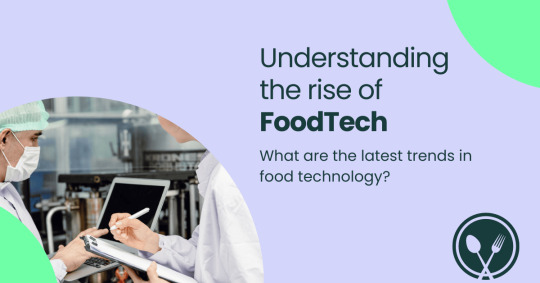
The FoodTech industry is experiencing rapid growth, transforming not only hospitality establishments like bakeries and restaurants but also the food in our home fridges. Businesses are leveraging innovative thinking to overhaul how food is being distributed, manufactured, marketed, and consumed. Investors are directing their attention towards FoodTech startups, and the UK is witnessing a surge in food technology activity, driven by increasing demand. What can we expect from the FoodTech industry? Let’s explore this and define the top trends.
What is the meaning of FoodTech?
Food tech, short for food technology, refers to the application of technology to various aspects of the food industry. It involves the use of innovative tools, techniques, and technologies to enhance efficiency, sustainability, and safety in the production and delivery of food products. Food tech encompasses a wide range of innovations, including precision agriculture, smart packaging, food processing advancements, and digital solutions that aim to revolutionise how we grow, produce, and consume food.
Lots of startups utilise research and development (R&D) to solve challenges in the food industry. This involves risk-taking; setting out on a mission without knowing if it can be solved 100% but trying to overcome it nevertheless. FoodTech companies aim to address challenges in the food industry, such as improving sustainability, enhancing efficiency in production and distribution, ensuring food safety, preventing world hunger, and creating innovative solutions for changing consumer preferences in an increasingly digital world.
What’s the difference between FoodTech and food science?
Food technology could be considered by certain specialists as a subset of food science. FoodTech focuses on the application of technology to improve and innovate various aspects of the food industry, including production, distribution, and consumption. On the other hand, food science is a broader field that examines the physical, chemical, and biological aspects of food to comprehend its composition, properties, and behaviour. It often provides foundational knowledge that can be applied to drive innovations in FoodTech. For example, food science includes experimentation to replicate the texture of meat for a plant-based alternative.
Examples of FoodTech activities
The food and beverage industry is bustling with innovation. Here are some examples of FoodTech innovations that are reshaping industrial trends:
Personalised nutrition
We’re living in a health-focused era where we have a heightened awareness of our well-being by counting our steps using our smartphones, using wearable tech to gauge metrics from our workouts, checking in on our mood with wellness apps, and more. When it comes to nutrition, lots of people don’t want a one-size-fits-all approach. Personalised nutrition can be used for people with high cholesterol, or who have specific vitamin deficiencies. It can even look at a person's genetics, and using Artificial Intelligence, we can now generate a specific meal plan.
Analysing food safety with technology
There have been too many tragic occasions where wrongly labelled food has been purchased by people with serious allergies. Technology can help us increase food safety at all stages of the food ecosystem. From blockchain for transparent supply chains to IoT sensors monitoring storage conditions checking temperature, and AI-driven quality control systems, technology ensures real-time tracking, early detection of contaminants, and improved traceability, ultimately contributing to safer and more secure food production and distribution.
Plant-based alternatives
How can we source protein from our diets sustainably that tastes good and is versatile across all dishes and cuisines? This is a question many innovative businesses are grappling with, to provide versatility for those with vegan and vegetarian diets. The supermarket shelves look very different to how they did a decade ago, moving past the same vegetarian sausages with new options of realistic nut roasts, vegan flaky fish, and baked goods that don’t use eggs or cow’s milk.
There is increasing investment and interest in these projects. For example, Bill Gates has financed the vegetarian burger made by Impossible Foods.
Technologies such as extrusion, fermentation, and isolation processes are used to extract and refine plant proteins. This allows for the creation of meat substitutes with textures and flavours resembling traditional animal products. Data analytics and machine learning algorithms can analyse vast datasets to optimise the formulation of plant-based products, while 3D printing creates intricate structures and textures in plant-based foods, offering new possibilities for product development.
Vertical farming
Vertical farms cultivate crops in vertically stacked layers or inclined surfaces within controlled environments, utilising advanced technologies for efficient and year-round food production.
Essentially, they earn the spot of FoodTech by integrating advanced technologies, such as controlled environment agriculture, energy-efficient lighting, hydroponics, and automation. These technologies optimise and enhance food production efficiency by cultivating crops in vertically stacked layers or inclined surfaces within indoor settings. R&D projects may look at using a combination of data analytics, machine learning, and robotics to optimise plant growth.
AgTech
On the topic of farming, there are bustling innovations taking place in the field of AgTech. From farm management software, weather monitoring to determine conditions affecting crops, seed genetics to study and manipulate plant seed genes to enhance desirable traits, to hydroponics which is a soilless farming technique that involves cultivating plants in nutrient-rich water solutions.
Preventing food waste
Several food technologies are employed to prevent food waste at various stages of the food supply chain.
Smart packaging with sensors: Packaging equipped with sensors and indicators, such as temperature and freshness monitoring devices, provides real-time information about the condition of perishable goods, helping to reduce spoilage and waste during transportation and storage.
Precision agriculture: Precision agriculture technologies, including sensors, GPS, and data analytics, optimise farming practices by monitoring crop health, reducing resource use, and improving overall efficiency, ultimately minimising losses in the agricultural production process.
Blockchain traceability systems: Blockchain technology enhances transparency and traceability in the food supply chain, enabling quick identification and removal of products at risk of contamination or spoilage. This helps prevent the distribution of unsafe or expired food items.
Surplus food redistribution platforms such as apps: Technology platforms connect food producers, retailers, and charities, facilitating the efficient redistribution of surplus food to those in need. These platforms play a crucial role in minimising edible food sent to landfills and helping hungry mouths get fed.
Data analytics for inventory management: Advanced data analytics and machine learning algorithms help businesses optimise inventory management by analysing consumer behaviour, market demand, and inventory levels. This reduces the chances of overstocking and understocking, leading to a significant reduction in food waste.
These examples demonstrate how FoodTech actively prevents food waste, enhancing sustainability and efficiency across the entire food supply chain, from the farm to the consumer.
Replacing monotonous tasks with robotics and automation
As technology evolves, there is growing worry among some that one day human workers will be replaced by machines, with robots serving our food. In reality, we’ll always need human effort in the hospitality industry. FoodTech is removing the monotonous tasks involved within the industry by introducing robotics and automation, lightening the workload.
From precision and efficiency in tasks like cutting, sorting, and packaging to the integration of robotic chefs and automated delivery systems, these technologies are enhancing productivity, ensuring food safety, and shaping the future landscape of food-related processes.
Smart food storage
Smart food storage solutions leverage advanced technologies such as temperature and humidity sensors, RFID tracking, and IoT connectivity to monitor and control environmental conditions, ensuring optimal freshness and preventing food spoilage. By employing these innovative storage systems, consumers and businesses can enhance food shelf life, minimise waste, and make informed decisions based on real-time data about the condition and safety of stored food items.
Agriculture marketplace
Agriculture marketplaces in FoodTech leverage technology to connect stakeholders in the agricultural supply chain, enhancing efficiency in transactions, data analytics, and supply chain optimisation. These platforms contribute to the broader goals of FoodTech by incorporating traceability, and transparency, and integrating precision agriculture technologies for sustainable and informed decision-making. By digitising traditional processes, agriculture marketplaces play a vital role in advancing the overall efficiency and sustainability of the food supply chain.
Kitchen Tech for efficiency
Kitchen tech, within the realm of FoodTech, encompasses a range of innovative technologies designed to enhance and streamline the cooking and food preparation process. It’s normal and accepted for people to have top-of-the-range coffee machines in their homes, with milk frothers, superfast blenders, and electric whisks, all of which didn't exist not too long ago and the jobs involved manual strength. Recent examples of kitchen tech include smart appliances such as connected ovens and refrigerators that users can control through mobile devices, precision cooking gadgets that employ sous-vide techniques, and smart kitchen scales featuring integrated recipe apps.
These technologies aim to bring efficiency, precision, and convenience to home kitchens, aligning with the broader trends in FoodTech to integrate digital solutions into various aspects of the culinary experience.
Transforming food processing
Food processing relates to the transformation of food, starting with agricultural products. Using FoodTech, we can integrate various technologies such as artificial intelligence, robotics, and biotechnology to enhance efficiency, quality, and sustainability in various stages of production. By advancing existing processing methods, we can improve food safety as well as nutritional content.
Biotechnology can achieve food processing with the application of biological principles, processes, and systems to develop innovative solutions for the production and processing of food. This can include genetic engineering, fermentation processes, and the use of microorganisms to improve food safety, nutritional content, and shelf life. Biotech innovations play a significant role in advancing the capabilities of the food industry to meet the demands of a growing population and evolving consumer preferences.
Standout examples of FoodTech
To show the versatility of FoodTech as well as the impact it’s having, here are 3 examples our team has chosen that truly stand out as transformative examples that redefine the way we eat and drink.
Air Up Water Bottle: The bottle provides fun and versatility for hydration. Using scent technology, you experience a multitude of flavours from your water by adding a scented pod to the water bottle that tricks your brain as you experience flavoured water when in reality you are just drinking plain water.
Father Farms: They have innovated long-lasting alternatives to traditional frozen foods, by using supercritical fluids of carbon dioxide to help the global distribution of food. They describe what they’re trying to solve: “The distribution of much of our world’s most popular foods is reliant upon the cold chain, an expensive temperature-controlled supply chain that keeps foods refrigerated or frozen from production, to storage, to distribution.” Their solution not only increases food availability but creates significant energy savings in the process.
Pizza Rebellion: It is the UK’s first robotic stand-alone pizza vending machine where in just 4 minutes, a pizza is freshly cooked for the consumer without a chef in the background operating it. The pizza recipes come from the founder’s restaurant which is why it is award-winning. They currently have 9 locations, at key train stations in the South of England, ready for hungry commuters on their way home from work.
Conclusion
The FoodTech industry is expected to grow at a compound annual growth rate (CAGR) of 9.9% from 2023 to 2030, meaning it is going to underpin the future of the food and beverage industry, helping us build and maintain a circular economy.
The surge in FoodTech startups, particularly in the UK, underscores the industry's significance in meeting the demands of a changing world. As consumers increasingly prioritise convenience, health, and sustainability, FoodTech stands as a key driver in shaping a more efficient, diverse, and tech-infused future for the way we produce, distribute, and enjoy food.
Have you innovated anything with FoodTech?
As technology continues to grow in intelligence, it will directly impact the food we eat. If you have spent any money on a project related to FoodTech, you could have a strong R&D tax credit claim on your hands. This government initiative rewards tax credits to innovative businesses that have challenged technical and scientific uncertainties. The Alexander Clifford team can determine if you're eligible during a non-obligatory call. Even if your project hasn’t yet reached your mission or you’ve not turned a project, your business can greatly benefit from R&D tax credits.
0 notes
Text
Conscious Cuisine on the Rise: Vegan Food Market to Witness Remarkable Surge by 2032
In the midst of a global paradigm shift towards sustainability, the Vegan Food Market emerges as a key player, poised for unparalleled growth from 2024 to 2032. This transformative journey transcends mere dietary preferences, heralding a shift towards conscious consumption and a more eco-friendly future.
A Blossoming Trend or a Culinary Revolution?
What was once considered a niche dietary choice has evolved into a burgeoning market, with projections indicating a tripling in size over the next eight years. The Vegan Food Market is not merely riding the waves of a trend; it's steering the ship towards a new era of gastronomy, where ethical choices and sustainability take center stage.
The Rise of Plant-Based Technology
Fueling this anticipated surge is the continuous innovation in plant-based technology. From realistic meat alternatives to dairy-free delicacies, the market is witnessing an influx of products that not only mimic but often surpass their animal-derived counterparts in taste, texture, and nutritional value. This technological evolution has played a pivotal role in breaking down barriers and enticing even the most skeptical taste buds.
Get a sample : https://www.econmarketresearch.com/request-sample/EMR0080
Health and Environmental Considerations
The forecasted growth of the Vegan Food Market is not solely a testament to changing culinary preferences but also a reflection of the increasing awareness regarding health and environmental impacts. As consumers become more conscious of the interconnectedness of their choices with the planet, the demand for sustainable and cruelty-free options has skyrocketed.
A plant-based diet is not only seen as a personal health choice but as a collective effort to mitigate climate change and reduce the environmental footprint associated with traditional animal agriculture. This shift aligns with broader global initiatives to address climate concerns and create a more sustainable food system.
From Niche to Mainstream: Redefining Culinary Landscapes
The Vegan Food Market is experiencing a remarkable transition from a niche market to mainstream prominence. No longer relegated to specialty stores and exclusive restaurants, vegan options are becoming commonplace in supermarkets, fast-food chains, and even high-end dining establishments. This shift signals a seismic change in how society perceives and embraces plant-based alternatives.
This mainstreaming effect is not only driven by a surge in demand from committed vegans but also by a growing number of flexitarians—individuals who incorporate plant-based meals into their diets while still consuming animal products. This widening consumer base indicates a broader acceptance of veganism as a viable and desirable lifestyle choice.
A Plethora of Eco-Friendly Epicurean Delights
The Vegan Food Market, during this forecasted period, promises a cornucopia of eco-friendly epicurean delights. Whether it's the latest plant-based burger that sizzles on the grill or dairy-free ice cream that tantalizes the taste buds, the market is diversifying to cater to a wide range of culinary preferences. Expect innovative flavors, textures, and presentations that challenge preconceived notions about vegan cuisine.
The Future Feast: Nourishing Body and Conscience
Beyond the realm of taste and trends, the Vegan Food Market beckons a future feast that nourishes not only the body but also the conscience. Choosing plant-based options becomes a symbolic gesture of environmental stewardship and ethical living. As consumers embrace this green culinary future, they actively participate in a movement that seeks to create a more harmonious relationship between humans, animals, and the planet.
In conclusion, the Vegan Food Market's forecast from 2024 to 2032 is not just a statistical projection but a testament to a broader cultural and societal shift towards conscious living. The market's anticipated growth symbolizes a collective commitment to redefining our relationship with food, fostering innovation, and embracing a greener, more sustainable culinary landscape. As we embark on this journey, the Vegan Food Market stands as a beacon, guiding us towards a future where what we eat not only delights our senses but also contributes to a healthier, more compassionate world.
Read more details: https://www.econmarketresearch.com/industry-report/vegan-food-market/
0 notes
Text
The Rise of Organic Food Delivery
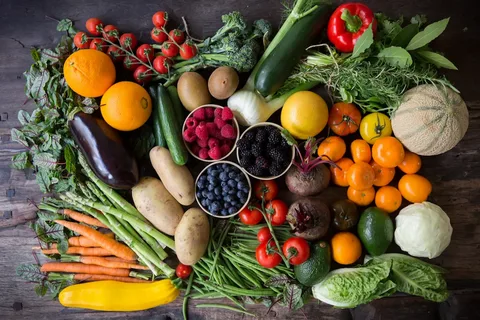
Organic food delivery is an innovative solution that caters to the growing demand for fresh, healthy, and environmentally sustainable produce. It's a service that allows consumers to receive organically grown fruits, vegetables, and other products directly to their doorsteps. This trend is becoming increasingly popular as it offers convenience, supports local farmers, and promotes a healthier lifestyle.
The organic food industry has witnessed a significant boom in the last decade. This surge is primarily due to increased awareness of health benefits, environmental concerns, and the desire for quality produce. Organic food delivery in Manly has emerged as a critical player in this sector, providing an easy and efficient way for consumers to access organic products.
Organic produce refers to foods grown without synthetic pesticides, genetically modified organisms (GMOs), and fertilisers. They are cultivated using methods that promote biodiversity, ecological balance, and soil health. This method of farming is not only beneficial for our health but also for the environment.
Health Benefits
Organically grown foods are often considered more nutritious. They contain higher levels of vitamins, minerals, and antioxidants than conventionally grown produce. The absence of harmful chemicals and pesticides in organic farming also means these foods are safer for consumption, potentially reducing the risk of certain diseases.
Environmental Impact
Organic farming practices are designed to reduce pollution, conserve water, reduce soil erosion, and use less energy. By supporting organic farms through delivery services, consumers indirectly contribute to environmental sustainability.
The Convenience of Delivery
One of the primary benefits of organic food delivery in Manly is convenience. Customers can order a variety of produce, dairy products, and even organic meats from the comfort of their homes. This mainly benefits those with busy lifestyles or limited access to organic markets.
Supporting Local Farmers
Many organic delivery services source their produce from local farms. This not only ensures the freshness of the produce but also supports the local economy. By choosing local organic produce, consumers can help sustain small farmers and reduce the carbon footprint associated with long-distance transportation of food.
Customisation and Variety
Many organic delivery services offer customisable boxes where customers can choose their preferred items. This flexibility allows people to try new products and enjoy a variety of seasonal produce. Some services also provide recipes and cooking tips, encouraging customers to try healthy and creative cooking at home.
The Cost Factor
While organic products are generally more expensive than conventional ones, the price is often justified by their quality and benefits. Moreover, some delivery services offer subscription models, which can make organic produce more affordable and convenient.
Challenges and Considerations
Despite its benefits, organic food delivery faces challenges such as preserving the freshness of produce during transportation and ensuring a consistent supply. Consumers should also be aware of false claims and ensure they purchase from certified organic providers.
The future of organic food delivery looks promising. With advancements in technology and logistics and increasing consumer awareness, this sector is expected to grow even further. The trend also aligns with a broader shift towards sustainable living and conscious consumerism.
In conclusion, organic food delivery is more than just a convenience; it's a lifestyle choice that benefits health, supports local economies, and promotes environmental sustainability. As this industry evolves, it can revolutionise how we think about and consume our food.
0 notes
Text
The Unsustainable Truth: How Animal Agriculture is Killing Our Planet

Introduction:
When most people think of climate change, they often picture exhaust-belching cars or smokestacks emitting plumes of pollution. While these sources undoubtedly contribute to the problem, there is another culprit with an even more significant impact on our planet: animal agriculture. Responsible for a tremendous carbon footprint, the livestock industry plays a substantial role in exacerbating climate change. In this blog post, we will explore the environmental consequences of animal agriculture's carbon emissions and discuss sustainable alternatives to mitigate its impact.
The Link between Animal Agriculture and Carbon Emissions

Unveiling the workings of greenhouse gas emissions in animal agriculture:
Methane, a potent greenhouse gas (GHG) emitted during enteric fermentation and manure management, is a major contributor to animal agriculture's carbon footprint. Cows, for instance, release considerable amounts of methane through their digestive processes. Additionally, nitrous oxide emissions from manure management and synthetic fertilizers further exacerbate the problem. Moreover, the indirect carbon emissions associated with deforestation for pastureland and feed production must not be overlooked.
Statistical evidence illustrating the scale of animal agriculture's carbon footprint:
To comprehend the magnitude of the issue, it is imperative to examine the numbers. Globally, livestock production is estimated to generate nearly 15% of all human-induced GHG emissions. That surpasses the emissions from the entire transportation sector, including cars, trucks, ships, and airplanes. Furthermore, animal agriculture is responsible for approximately 80% of all deforestation in the Amazon rainforest, leading to a loss of biodiversity and further increasing carbon emissions.
Environmental Consequences of Animal Agriculture's Carbon Footprint

Impact on climate change:
The staggering emissions from animal agriculture greatly contribute to the greenhouse effect and subsequent global warming. As a result, we are witnessing severe weather patterns, melting glaciers, and rising sea levels. The emissions create a vicious feedback loop, exacerbating climate change and its impacts on ecosystems and communities worldwide.
Deforestation and loss of biodiversity:
Animal agriculture drives deforestation on a massive scale. Immense areas of valuable rainforests are cleared to create pastureland for livestock or grow feed crops like soybeans and corn. This destruction of natural habitats leads to the loss of countless plant and animal species, disrupts the delicate balance of ecosystems, and releases stored carbon into the atmosphere.
Water scarcity and pollution:
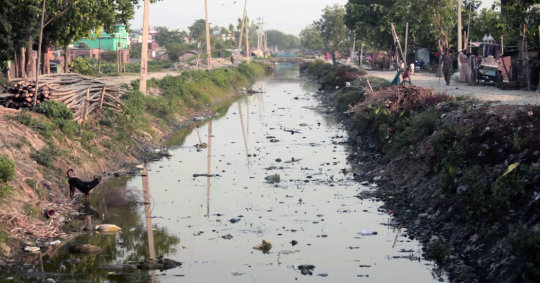
Animal agriculture accounts for a considerable portion of global freshwater consumption. Water is needed to irrigate crops for animal feed and provide drinking water for livestock. Consequently, it contributes to water scarcity in many regions. Furthermore, the intense use of fertilizers and the improper management of animal waste leads to water pollution, as runoff carries excess nutrients and pathogens into rivers and oceans.
Sustainable Alternatives to Mitigate Animal Agriculture's Carbon Footprint
Plant-based diets and their environmental benefits:
One of the most effective actions individuals can take to reduce animal agriculture's carbon footprint is to adopt plant-based diets. By choosing plant-based alternatives over meat and dairy, we can reduce the demand for livestock feed crops, decrease deforestation rates, and mitigate emissions associated with animal agriculture. Plant-based diets not only have numerous environmental benefits but also promote personal health and animal welfare.
Technological advancements and innovative solutions:
The emergence of technological advancements offers hope for a more sustainable future. Clean meat, also known as lab-grown or cultured meat, aims to produce real meat without the need for traditional animal farming. This method requires significantly fewer resources, reduces methane emissions, and eliminates the need for deforestation. Additionally, sustainable farming practices, such as regenerative agriculture and improved waste management, can help mitigate the carbon footprint of animal agriculture.
Policy changes and industry transition:
While individual actions are crucial, systemic change is necessary to address the environmental impact of animal agriculture. Governments must implement policies that incentivize sustainable farming methods, support research in alternative protein sources, and promote the consumption of plant-based products. Additionally, consumer awareness and demand for eco-friendly products can exert pressure on the industry, encouraging the adoption of sustainable practices at a larger scale.
Conclusion:
The unsustainable truth is clear: animal agriculture is playing a significant role in the degradation of our planet. Its vast carbon emissions contribute to climate change, deforestation, water scarcity, and the loss of biodiversity. However, by adopting plant-based diets, supporting technological advancements, and driving policy changes, we can make a positive impact. In the face of this global crisis, it is crucial for individuals, industries, and governments to come together and take responsibility for creating a more sustainable future.
#FactoryFarms#MeatFreeMonday#CrueltyFreeFood#VeganLifestyle#SaveTheAnimals#NoMoreFactoryFarms#EndFactoryFarming#GoGreenGoVegan#SaveThePlanetEatPlants#ProtectOurOceans#SaveOurAnimals#GoVeganForYourPeace
0 notes
Text
Nourish and Moisten: The Science Behind Modern Natural Liquids
In a global wherever wellness and well-being get middle point, the quest for nutritional superiority has paved just how for a innovation in the cocktail industry. Natural drinks have emerged as not just thirst quenchers but as elixirs that assurance to feed the body and revitalize the spirit. This article delves into the art and science behind these transformative products, exploring their structure, advantages, and the position they enjoy in our contemporary pursuit of a healthier lifestyle.
The Genesis of Nutritional Products:
Natural beverages are not a current trend; their sources can be traced back again to the first days of protein shakes taken by athletes and bodybuilders. However, the landscape has developed significantly. Nowadays, nutritional beverages encompass a diverse range of remedies, catering to a wide selection of nutritional wants and preferences.
The Science of Nutrition:
At the core of natural drinks lies a sophisticated mixture of vitamins, nutrients, meats, and different important nutrients. These drinks are cautiously developed to offer a convenient and successful way to complement one's diet. From protein-packed shakes for muscle recovery to vitamin-rich drinks for immune help, these drinks are designed to load natural holes and promote over all well-being.
Designed for Every Lifestyle:
Among the exceptional aspects of natural products is their flexibility to diverse lifestyles. Whether you're a exercise fanatic looking to boost your exercise program, a busy skilled needing a quick and nutritious food alternative, or some one just striving for better health, there's a nutritional consume designed to your certain needs.
Beyond Simple Diet:
While the main emphasis of nutritional drinks is to supply important nutritional elements, several go beyond the basics. Practical substances such as for example probiotics, antioxidants, and adaptogens are often incorporated, encouraging advantages for digestive wellness, antioxidative support, and stress management.
The Increase of Plant-Powered Diet: boost plus
A distinctive development in the world of nutritional beverages is the surge in plant-based options. Because the demand for sustainable and cruelty-free services and products grows, plant-powered drinks have recognition choices. Nutritional drinks constructed from substances like pea protein, almond dairy, and spirulina present not just health advantages but in addition an eco-friendly alternative.
Moving the Market:
The nutritional drink market is full of possibilities, and moving through the alternatives may be overwhelming. Consumers are inspired to be worrying, understanding their nutritional needs and selecting beverages that arrange using their health goals. Examining brands, contemplating element quality, and visiting with healthcare experts may all donate to creating knowledgeable choices.
The Potential of Nutritional Drinks:
As engineering improvements and natural technology progresses, the ongoing future of nutritional products holds fascinating possibilities. Customized preparations, advanced nutrient supply systems, and innovative styles are beingshown to people there, encouraging an even more enriching knowledge for consumers.
Realization:
Natural products have transcended their modest origins, becoming important aspects of a health-conscious lifestyle. Whether as a convenient dinner substitute, a post-workout recovery assistance, or even a everyday supplement, these drinks are transforming just how we approach nutrition. Even as we continue steadily to prioritize our wellness and well-being, the art and science of nutritional drinks may certainly enjoy a essential position in shaping the ongoing future of nutritional consumption.
0 notes
Text
What is Vegetarian Meat and How is it Made?
For centuries, meat has been the centerpiece of many diets, its savory flavors and satisfying textures a staple across cultures. However, in recent years, a revolution has been brewing in the culinary landscape: the rise of Vezlay Veg Meat. But what exactly is this intriguing alternative, and how does it bridge the gap between plant-based and meat-loving palates?

Vegetarian Meat: The Essence Explained
First, let's dispel a common misconception: vegetarian meat doesn't actually contain any meat. It's a blanket term for a diverse range of products made from plant-based ingredients, mimicking the taste, texture, and appearance of traditional meat. These alternatives cater to vegetarians, vegans, and flexitarians looking for delicious and sustainable options without compromising on the familiar.
The Building Blocks of Vegetarian Bounty:
So, what goes into crafting this culinary magic? The ingredients are as varied as the dishes themselves, but some key players include:
Plant Proteins: Soybeans, peas, lentils, wheat gluten, and textured vegetable protein (TVP) are common bases, offering a high protein content and a meat-like structure.
Fats and Oils: Coconut oil, canola oil, and avocado oil add richness and flavor, replicating the juiciness of animal fats.
Binding Agents: Tapioca starch, flaxseeds, and methylcellulose help hold the ingredients together and create a desirable texture.
Flavor Enhancers: Spices, herbs, and natural flavorings like yeast extract or beetroot juice mimic the savory notes of meat.
From Raw Ingredients to Delicious Delights:
Turning these humble plant ingredients into culinary masterpieces involves a range of techniques:
Extrusion: This high-pressure process forces the protein mixture through shaped dies, creating fibers that mimic the muscle tissue of meat, resulting in products like burgers, sausages, and nuggets.
Hydration and Texturization: TVP and other plant proteins are hydrated and then processed using techniques like freeze-drying or spinning to achieve a meaty texture.
Mycoprotein: This fungal protein, derived from mushrooms, is gaining popularity due to its natural meat-like texture and nutritional profile.
3D Printing: This cutting-edge technology allows for precise replication of meat's intricate structures, opening up exciting possibilities for future developments.
Vezlay Foods: Pioneering the Vegetarian Meat Revolution
In this landscape of innovation, Vezlay Foods stands as a leading force. Founded with the vision of creating delicious and sustainable plant-based options, Vezlay utilizes a unique blend of traditional Indian culinary wisdom and cutting-edge technology. Their products, like the award-winning Minced Meat and Chickn Nuggets, are made with locally sourced ingredients like lentils, chickpeas, and spices, offering a healthy and flavorful alternative to conventional meat.
What sets Vezlay apart?
Focus on Local Ingredients: Vezlay sources its lentils and chickpeas primarily from Indian farms, supporting local communities and reducing their carbon footprint.
Authentic Indian Flavors: Their products are infused with traditional Indian spices, offering a unique and flavorful twist to vegetarian meat.
Commitment to Sustainability: Vezlay prioritizes eco-friendly practices, from using recycled packaging to minimizing water and energy consumption.
Beyond the Plate: The Impact of Vegetarian Meat
The rise of vegetarian meat goes beyond deliciousness. It presents a compelling answer to environmental concerns surrounding animal agriculture, offering a more sustainable path to feeding the world's growing population. Additionally, vegetarian meat can provide valuable protein sources for those who choose not to consume animal products.
The Future of Vegetarian Meat: Endless Possibilities
The world of vegetarian meat is brimming with potential. We can expect to see further advancements in technology, leading to even more realistic textures and flavors. Research into plant-based fats and cholesterol alternatives is ongoing, paving the way for even healthier options. The future looks bright for vegetarian meat, promising a delicious and sustainable way to nourish ourselves and our planet.
So, next time you crave the familiar comfort of meat, consider exploring the exciting world of vegetarian alternatives. With countless options like Vezlay Foods leading the way, you might just discover your new favorite dish, one that's good for you and good for the planet.
#Vezlay Veg Meat#Vezlay Veg Chicken#Vezlay#Vezlay Products#Vezlay Online#Vezlay Products Online#vegan recipee
0 notes
Text
Do Vegetarians Eat Chicken Broth? The Truth About Vegans and Chicken Broth

Have you ever wondered if vegans eat chicken broth? Well, I’ve been on a quest to find the answer, and I can’t wait to share my discoveries with you! In this article, we’ll explore the world of chicken broth, its relevance to the vegan lifestyle, and the intriguing question of whether semi-vegans can indulge in it. But fear not, my plant-based pals, because we’ll also uncover some fantastic vegan-friendly alternatives that will elevate your culinary game! Plus, I’ll spill the beans on how you can easily make your very own vegan-friendly “chicken” broth at home. So, buckle up and join me on this exciting journey into the realm of veganism and chicken broth. Let’s dive in together and explore this fascinating topic!
All right then, let’s talk chicken broth! So, what exactly is chicken broth? It’s a liquid made by simmering chicken bones and other parts in water, along with various vegetables and herbs.
Now, you may wonder why chicken broth is even relevant to vegans if it’s made from chicken.
After all, aren’t vegans supposed to avoid all animal products? Well, the answer is a bit complicated.
While some vegans avoid animal products, others may consume eggs, dairy, or fish. This means there’s no one-size-fits-all answer to whether vegans can eat chicken broth.
Chicken broth is definitely off the menu for vegans who avoid all animal products.
This is because chicken broth is made from animal bones, which goes against the principles of veganism.
So, there you have it – a brief rundown of what chicken broth is and why it’s relevant to the vegan diet.
As a vegan, the thought of consuming chicken broth makes me cringe. But let’s take a closer look at the reasons why vegetarians like myself choose to avoid it.
Firstly, ethical considerations are a significant factor. Vegetarianism is rooted in the belief that all living beings deserve respect and should not be exploited for our consumption. Consuming animal products, like chicken broth, goes against this principle and contradicts the vegetarian philosophy.
Secondly, Another crucial aspect to consider is animal welfare. The conditions in which animals are raised and slaughtered in the meat industry of chicken broth raise significant concerns. Chickens raised for broth are typically kept in cramped and unsanitary conditions, which can lead to stress and disease. They endure a life filled with suffering, which is something vegetarians actively oppose.
Lastly, the environmental impact of the meat industry cannot be ignored. Animal agriculture is a leading contributor to deforestation, greenhouse gas emissions, and water pollution. By choosing to abstain from chicken broth and other animal products, vegetarians contribute to mitigating these environmental consequences. It’s our way of positively impacting the planet and advocating for a more sustainable future.
Understanding these ethical, animal welfare, and environmental considerations helps shape the vegetarian perspective on consuming chicken broth. As vegans, we aim to align our choices with our values of compassion, respect for animals, and sustainability. By excluding chicken broth from our diets, we consciously decide to support a more compassionate and environmentally friendly lifestyle.
In the next sections, we will explore alternative options to chicken broth that align with the principles of vegetarianism, providing delicious and nutritious alternatives that can be easily incorporated into our diets.
Ah, the age-old question: can semi-vegans eat chicken broth? It all depends on the individual’s beliefs and dietary restrictions.
Semi-veganism, also known as flexitarianism, is a diet that includes occasional consumption of meat, poultry, and fish but is primarily plant-based.
For some flexitarians, chicken broth may be acceptable in their diet, as it’s a lower-impact form of animal consumption than eating chicken meat.
However, others may consider even the consumption of broth made from animal products to violate their dietary principles.
It’s worth noting that while chicken broth may be acceptable for some semi-vegans, it’s important to be mindful of the sourcing of the chicken used to make the broth.
Choosing ethically and sustainably sourced chicken is an important consideration for those prioritizing animal welfare and sustainable agriculture practices.
For those who don’t consume chicken broth, there are plenty of vegan alternatives to chicken broth that can be easily incorporated into a semi-vegan diet.
0 notes
Text
10 Effective Ways to Reduce CO2 Emission and Save the Planet
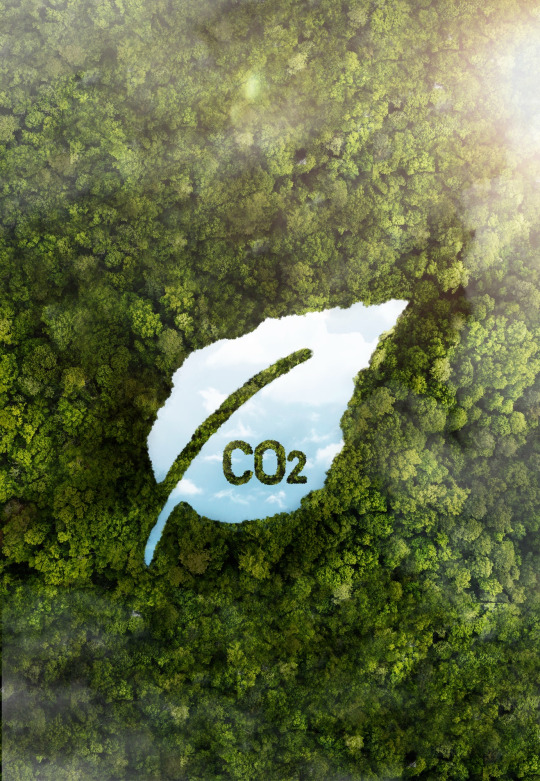
In our rapidly changing world, addressing climate change is a challenge that cannot be ignored. The choices we make daily have a direct impact on the environment, with the escalation of CO2 levels being a chief concern. Thankfully, the power to make a difference is in our hands. There are several effective strategies we can adopt to reduce CO2 emissions, paving the way for a healthier planet. In this post, we will delve into ten of these methods, providing insight on how each one contributes to a greener future.
Opt for Public Transportation or Carpooling
Every time we use our vehicles, CO2 is released into the atmosphere. One of the simplest ways to reduce CO2 emissions is by using public transportation or carpooling. Buses and trains can carry multiple passengers at once, translating to fewer vehicles on the road and a decreased release of harmful gases. Similarly, carpooling with coworkers or friends allows you to share the emissions produced by a single vehicle, rather than multiplying them with multiple cars. Not only does this save on fuel costs and reduce traffic congestion, but it also makes a significant difference in the amount of CO2 being released.
Reduce, Reuse, Recycle
We’ve all heard the mantra before, but its importance in the fight against climate change cannot be stressed enough. The production of goods, especially non-biodegradable ones, requires energy, often derived from burning fossil fuels. This process, in turn, releases CO2. By choosing to reduce our consumption, reuse items when possible, and recycle materials like plastic, paper, and metal, we can diminish the demand for new goods. This approach not only helps reduce CO2 emissions but also reduces the strain on landfills and conserves natural resources.
Invest in Renewable Energy
Transitioning to renewable energy sources is one of the most impactful ways to reduce CO2 emissions. Solar panels, wind turbines, and hydroelectric plants produce energy without releasing carbon dioxide. Moreover, as technology advances, the cost of installing renewable energy solutions has significantly decreased. By opting for green energy in our homes or supporting policies that favor renewable over non-renewable sources, we can ensure a cleaner, more sustainable energy future
Adopt a Plant-Based Diet
The meat and dairy industry is known for its substantial carbon footprint. Livestock farming results in methane production, a greenhouse gas that’s significantly more potent than CO2. By choosing to adopt a plant-based diet or even cutting down meat consumption, we can effectively reduce CO2 emissions. It’s not about an overnight change but incorporating more plant-based meals into your weekly routine can have a significant impact over time. Moreover, vegetarian and vegan diets are often rich in essential nutrients and can offer a variety of health benefits.
Green Your Home
Simple changes around the house can lead to significant reductions in CO2 emissions. Insulating walls and roofs, sealing windows, and using energy-efficient appliances can decrease the amount of energy required to heat and cool your home. Switching to LED bulbs, which use up to 80% less energy than traditional ones, is another step in the right direction. By greening our homes, we can reduce CO2 emissions and, as a bonus, save on utility bills. For more details visit us at https://www.cficarbonproducts.com/.
Support Eco-friendly Businesses
In the modern era of consumerism, businesses play a crucial role in the production of CO2 emissions. However, many companies are becoming increasingly environmentally conscious, using sustainable materials, reducing waste, and offsetting their carbon footprint. By choosing to support these businesses, we not only encourage more eco-friendly practices but also reduce CO2 emissions indirectly through our purchasing decisions. Embrace Energy-efficient Technologies
From smart thermostats to high-efficiency washing machines, technology is continuously evolving to help us use energy more wisely. Upgrading to these devices can drastically reduce CO2 emissions from our homes. With smart devices, we can have real-time monitoring and control over our energy usage, ensuring we only use what’s necessary.
Educate and Advocate
While personal actions are essential, systemic change can achieve broader and lasting impacts. Stay informed about climate issues, participate in local environmental initiatives, and vote for leaders who prioritize sustainability. By advocating for policies that aim to reduce CO2 emissions, we can help shape a brighter, greener future for everyone.
Plant Trees and Support Reforestation
Trees absorb CO2, making them nature’s own carbon capture solution. By planting trees or supporting reforestation projects, we can counteract some of the emissions we produce. While it might seem like a small gesture, if done collectively, it can make a significant difference in the quest to reduce CO2 emissions.
Reduce Water Wastage
Water treatment facilities consume a lot of energy. By cutting down on water wastage, whether it’s through fixing leaks, taking shorter showers, or using water-efficient appliances, we can contribute to a reduction in the energy used and subsequently reduce CO2 emission.
Conclusion
In a world grappling with climate change, every action, no matter how small, contributes to the larger goal of safeguarding our planet. Reducing CO2 emissions is not just the responsibility of big corporations or governments; it’s a collective effort. By implementing these strategies in our daily lives, we not only pave the way for a healthier environment but also ensure a better, more sustainable future for the generations to come. As we move forward, let’s embrace these changes with optimism and the belief that together, we can make a world of difference.
0 notes
Text







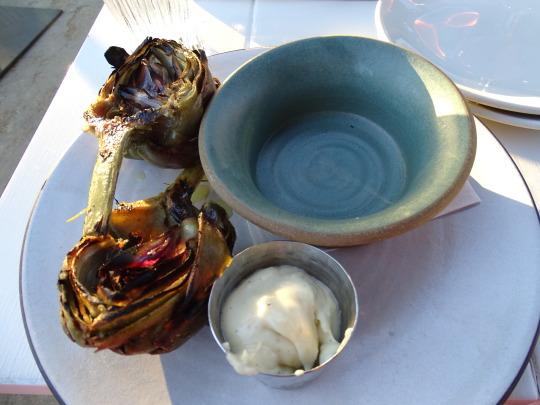





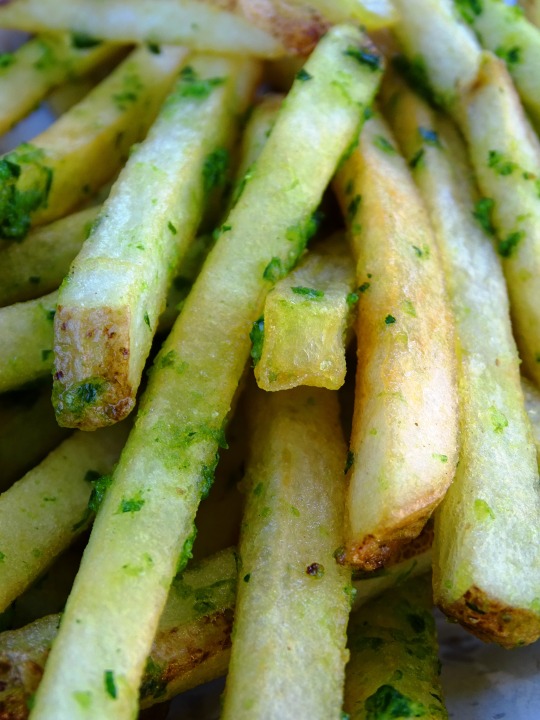


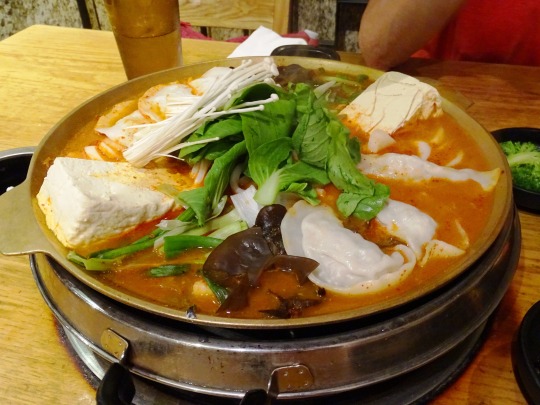


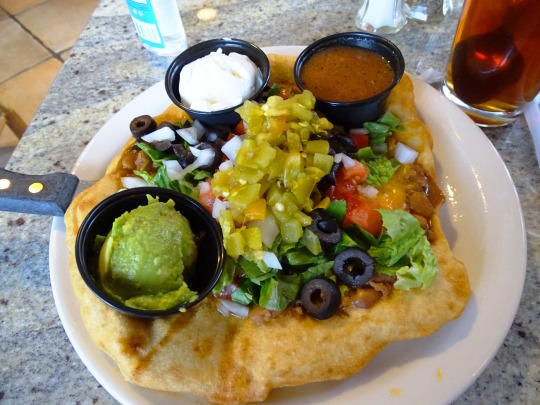

World Vegetarian Day
Explore the vegetarian cuisine for a day, and see if this lifestyle could help you improve your health, happiness, and the environment all at once.
Every year there are thousands of people making the move to a healthier, more socially responsible way of living. These people care about the lives of animals and want cruelty to come to an end, they want to live long healthy lives and avoid the perils of heart disease, and they want to have beautiful bodies sustained by living in tune with the Earth. Who are these people? They’re vegetarians, and World Vegetarian Day celebrates their decision to eliminate meat and animal products from their diet and live a more conscientious life.
Learn about World Vegetarian Day
Did you know that roughly every one in ten people around the world is a vegetarian? That figure often shocks people. It’s more than you would probably expect, right? A lot of people are also surprised to learn the fact that India is the country that has the lowest meat consumption per capita around the globe.
On World Vegetarian Day, we celebrate all of the good things that are associated with being a vegetarian. It is a good day to show people that you can still enjoy eating food by going meat-free! It is not boring, and there are some amazing recipes out there.
Even if you are not a vegetarian yourself, you can celebrate World Vegetarian Day. Why not go vegetarian for this day and see how you manage? From veggie burgers and cheese pizza to tofu and carrot sticks; there are a lot of amazing meat-free delights that you can enjoy on this day. Plus, you never know, it may inspire you to have more meat-free days in the future.
There are a number of different benefits that are associated with going meat-free. Firstly, you have the benefits for your body. Vegetarian diets tend to involve consuming a lot of the good stuff that you cannot typically find in meat. This includes a large number of phytochemicals, unsaturated fat, magnesium, vitamins E and C, folic acid, and fiber. This translates into a healthier weight, lower blood pressure, reduced risk of heart disease, and also lower cholesterol.
If that was not enough, going veggie also offers a number of different benefits in terms of the environment. Not only does this spare animals, but it conserves fossil fuel too. For example, one calorie of beef requires 78 calories of fossil fuel! This is something that a lot of people don’t realize. For soybeans, only one calorie of fossil fuel is needed for one calorie of beef. This means that it is 780 percent more efficient when compared to the production of meat.
History of World Vegetarian Day
World Vegetarian Day was established by the North American Vegetarian Society (NAVS) in 1977 to help promote the vegetarian way of life, and educate people on the health and social benefits of making the move to eliminate meat from their diets. As omnivores, humans are capable of surviving in complete health on a diet that contains no animal meat or products of any kind, but are there other benefits than merely a clean conscience?
As it turns out, the answer is an unequivocal yes. Vegetarian diets are significantly more healthy than diets that contain animal products, especially when you are conscientious about your fat intake. With a low-fat vegetarian diet you can completely avoid any issues with cardiovascular disease, the leading cause of death in the United States alone.
Not only do vegetarian diet remove animal fat and cholesterol from their diets (especially true for vegans), but they consume more fiber and anti-oxidants, well known for their ability to fight cancer! So profound is the effect of vegetarianism on our health it has statistically been shown to add 13 healthy years to our lives.
Need more proof? Just look at Okinawa, where the people with the longest life-span in the world live. Guess what their diet primarily consists of?
How to celebrate World Vegetarian Day
Even if you have no desire to live a Vegetarian lifestyle every day, give yourself a chance to explore the world that is vegetarian cuisine on World Vegetarian Day. Explore the health benefits and find out how delicious and healthy eating no animal products can be by eliminating them from your diet for just one day.
It can even give you an opportunity to try out new restaurants and dishes, just stop in at your local vegetarian restaurant or order off the vegetarian menu at your favorite restaurant. Recruit some friends to go with you and have a wonderful night out, without hurting any animals!
There are a number of other ways that you can celebrate World Vegetarian Day as well. Aside from opting for a meat-free day, you can also enrich your knowledge and/or share your knowledge about the benefits of being a vegetarian online. Educate your friends, followers, and family members about the advantages of going vegetarian. You will find a lot of resources online about this. Especially on World Vegetarian Day, there are going to be a lot of infographics, videos, and other pieces of content that are going to be going around, so why not share these with people you connect with online so that you can be part of this movement?
Another way to observe World Vegetarian Day is by shopping at your local farmer’s market. Farmer markets tend to have some of the most delicious and freshest fruits and vegetables. With fall in the air, you should have no trouble finding a good selection of meat-free foods that appeal to your mood and your tastebuds.
Source
#Three Cheese and Spinach Dip#Lozärner Birewegge#Tapas Amiundo#World Vegetarian Day#WorldVegetarianDay#1 October#Garlic Fries#USA#restaurant#Truffle Cheese Fries#I love meat#Cheese Fondue#original photography#Toronto#Okra Kimchi Fried Rice#Lotus Root Chips#Don Don Izakaya#Sweden#Poutine#Tempura Fried Green Beans#food#travel#vacation#Switzerland#Canada#Spain#Hiltl Tartar#Navajo Taco
1 note
·
View note
Text
Plant-Based Revolution: How Meat Substitutes are Reshaping the German Food Industry
In the heart of Europe, a culinary revolution is taking place that is transforming Germany's traditional food landscape. The rise of meat substitutes is not just a passing trend; it's a seismic shift that is reshaping the way Germans eat and think about food. In this article, we delve into the intricacies of this plant-based revolution and its far-reaching implications for the German food industry.
The Evolution of Dietary Choices
Germany, known for its sausage-centric cuisine and hearty meat dishes, is undergoing a profound evolution in dietary choices. This shift is driven by a combination of factors, including health consciousness, environmental concerns, and a growing appetite for culinary innovation.
For more insights on Germany meat substitutes market forecast, download a free report sample
Health and Wellness in Focus
As Germans become more health-conscious, there's a notable shift towards choosing foods that promote well-being. Meat substitutes offer a way to enjoy familiar flavors and textures without the potential health drawbacks associated with excessive meat consumption. Consumers are realizing that they can still savor their favorite dishes while making choices that align with their health goals.
Sustainability Matters
Beyond personal health, Germans are increasingly aware of the environmental impact of their food choices. The livestock industry is a significant contributor to greenhouse gas emissions, deforestation, and resource depletion. Meat substitutes, often made from plant-based ingredients, present a more sustainable alternative that resonates with environmentally conscious consumers.
A Playground of Innovation
The surge in demand for meat substitutes has spurred remarkable innovation in the culinary world. From plant-based sausages that sizzle on the grill to burgers that "bleed," the variety and quality of these substitutes are astounding. Food scientists and chefs are collaborating to create products that mimic the taste, texture, and even the aroma of traditional meat, satisfying both the palate and the conscience.
Cultural Transformation
Traditional German cuisine is deeply rooted in meat-heavy dishes that have been passed down through generations. However, a cultural transformation is underway as younger generations embrace more diverse eating habits. This shift is not just limited to home kitchens; restaurants and fast-food chains are incorporating meat substitutes into their menus, catering to changing tastes and preferences.
Economic Implications
The surge in demand for meat substitutes has significant economic implications. Food producers are pivoting to meet this growing demand, investing in research and development to enhance the taste and nutritional profile of their products. Retailers are expanding their offerings to include a wide range of meat substitutes, thereby driving consumer accessibility and choice.
The Path Ahead
The plant-based revolution in Germany's food industry is not without challenges. Ensuring that meat substitutes offer balanced nutrition and avoiding the pitfalls of highly processed foods are crucial considerations. As the industry continues to grow, collaboration between food scientists, nutritionists, and culinary experts will be pivotal in addressing these challenges.
In conclusion, the rise of meat substitutes in Germany represents more than just a shift in dietary preferences; it's a reflection of changing attitudes towards health, sustainability, and innovation. The German food industry is undergoing a transformative journey, one where tradition meets modernity, and where consumers have the power to shape the future of their plates. As the plant-based revolution gains momentum, it's clear that this trend is here to stay, reshaping not only how Germans eat but also how the entire food industry operates.
0 notes
Text
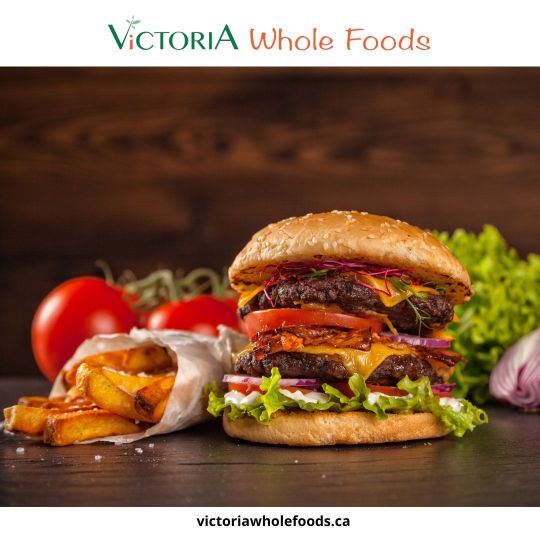
Delving into the Rewards of Choosing Organic Bulk in Toronto
Purchase Organic Bulk in Toronto for a Greener Future
Do you wish to enhance your health and the environment simultaneously? It is a great notion to begin with organic foods! Producing organic food without the use of fertilizers, pesticides, or harmful chemicals. It is better for the environment and provides more nutrients than conventionally cultivated produce. If you reside in Toronto, selecting organic bulk can be a simple method to incorporate this lifestyle change into your daily routine. This article will discuss the importance of selecting organic bulk in Toronto, as well as how to find the best options. Let us proceed!
What is an Organic Food?
Produce and other agricultural products grown without the use of synthetic fertilizers, pesticides, or genetically modified organisms (GMOs) are considered organic food. Instead, organic producers use natural methods such as crop rotation, composting, and companion planting to preserve soil fertility and ward off pests.
The treatment of animals is a major distinction between conventional and organic agriculture. On organic farms, animals have access to pastureland, pure water, fresh air, and a wholesome diet devoid of antibiotics and growth hormones. This results in healthy meat for consumers as well as contented animals.
By selecting organic foods, consumers support agricultural practices that prioritize the health of the environment over monetary gain. It is more environmentally friendly because it does not rely on harmful chemicals that can contaminate our land, waterways, and even wildlife populations.
In addition, studies reveal that organic produce contains higher concentrations of vitamins, minerals, and antioxidants than conventionally grown produce, which may confer additional health benefits. Therefore, adopting an organic lifestyle is beneficial for both the environment and your health.
Organic food's advantages
For good reason, organic food consumption has increased in prevalence in recent years. Organically grown food is produced without the use of synthetic pesticides or fertilizers or radiation. Eating organic has many benefits, including promoting sustainable agriculture, a cleaner environment, and better health.
One of the primary advantages of consuming organic food is that organic produce contains more nutrients than conventionally grown produce. According to studies, organically grown fruits and vegetables contain higher concentrations of vitamins and minerals such as vitamin C, calcium, iron, magnesium, and phosphorus.
Using organic fertilizers such as composted manure to keep soils nourished is a further advantage of organic cultivation. As a consequence, crops become more resistant to drought, and soils with a higher water-holding capacity produce generally healthier plants.
Environmental protection is also supported by organic agricultural practices. We can reduce the amount of toxins released into the air, water, and soil by avoiding the use of toxic pesticides in conventional agricultural practices, while also preserving wildlife habitats!
By choosing to consume organic foods, we ensure that present and future generations will have access to wholesome food options from environmentally conscious farms.
Purchasing Organic Products in Bulk in Toronto
In recent years, there has been a rise in the popularity of organic foods when grocery purchasing. This is a consequence of increased public awareness regarding the benefits of consuming organic foods. What about bulk purchases of organic products? Here are some arguments in favor of buying organic and bulk supplies in Toronto.
Buying in quantity reduces packaging waste and saves money. The elimination of individual packaging drastically reduces refuse generation. Moreover, purchasing in quantity results in lower unit costs compared to purchasing in smaller quantities.
If you choose organic bulk products in Toronto, you can be certain that they were not grown using artificial fertilizers or harmful pesticides. This implies that you are promoting cultivation practices that are good for the environment, in addition to the health benefits for your body.
The purchase of organic bulk products from neighborhood retailers benefits local small businesses. Knowing who raised your sustenance and where it came from is almost always advantageous!
There are numerous advantages to converting to organic bulk items for your health, the environment, and the welfare of your community.
Where to Find Toronto's Finest Organic Bulk
There are a few steps you can take to obtain the largest selection of Toronto organic skincare store. Try inquiring in advance! Friends and family members who have purchased organic food in the past may be able to provide recommendations.
Internet research is a further option. Explore local health food stores and cooperatives that specialize on organic products. Search multiple websites for consumer ratings.
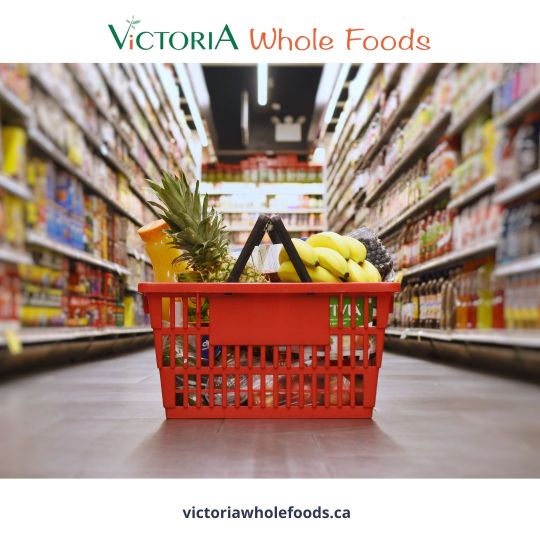
Remember to browse at farmer's markets as well! Numerous vendors at these Toronto markets sell organic produce and grains in abundance, making them ideal for purchasing high-quality organic food while supporting local businesses.
Always read labels prior to buying organic bulk products. Verify that the product meets your requirements for quality and moral production methods.
Please feel free to query! If you have concerns about the product or the procedures used to obtain it, inquire at the store or market stall. They should be able to provide you with information that aids in your purchasing decision.
Conclusion
In conclusion, purchasing organic products in bulk in Toronto is a fantastic method to support local farmers and reduce your carbon footprint. By purchasing organic products in abundance, not only can you save money, but you can also protect the environment.
Before selecting the finest organic grocery store in Toronto, verify all certifications and labels. Do not be afraid to inquire about their agricultural practices and product sources.
We can work toward a better future for ourselves and future generations by incorporating small changes into our daily lives, such as the adoption of organic bulk alternatives. Therefore, let's make decisions that benefit both our wellbeing and the health of the planet!
0 notes